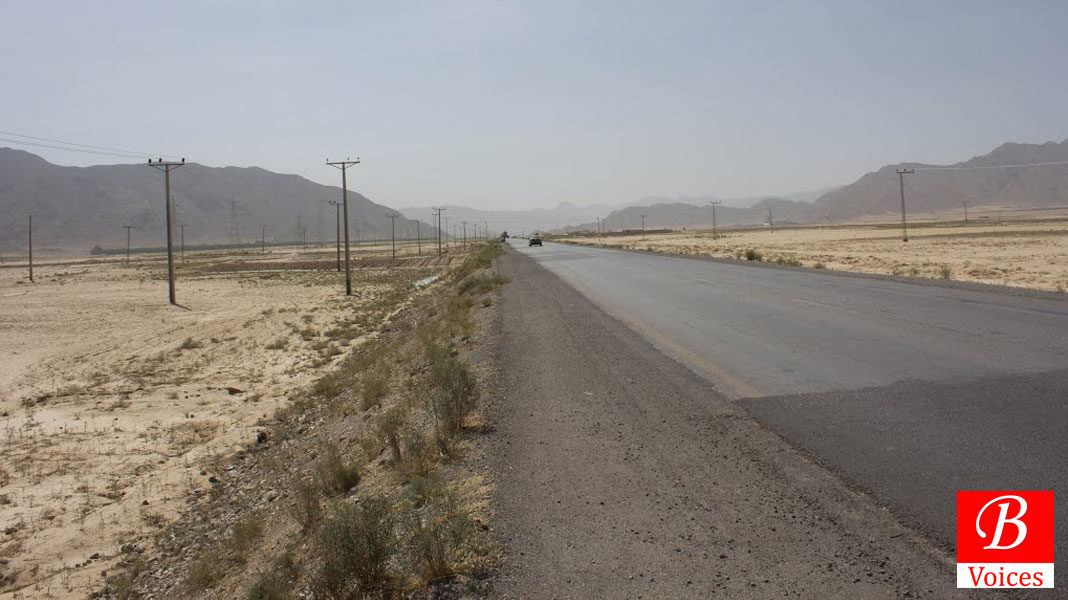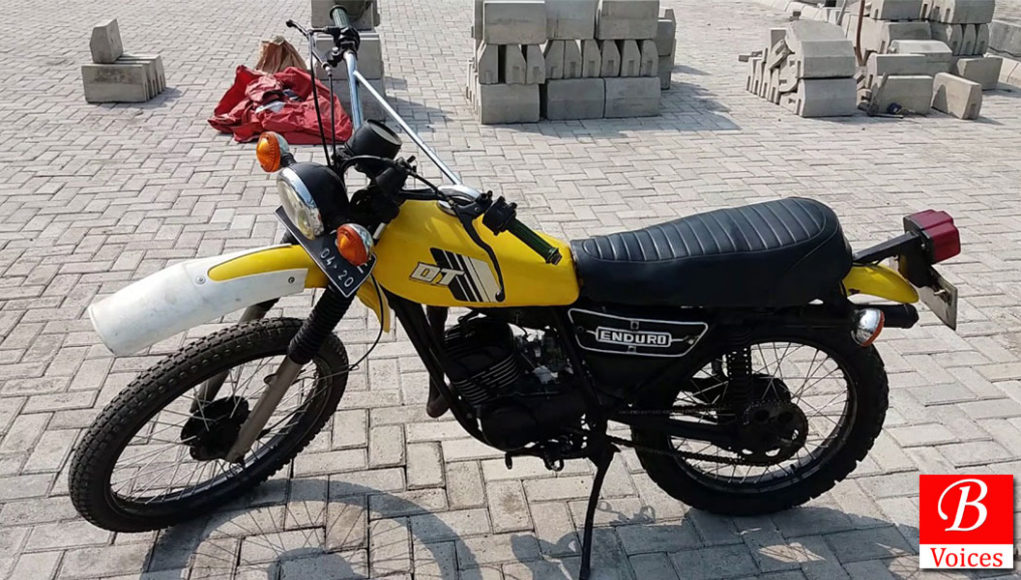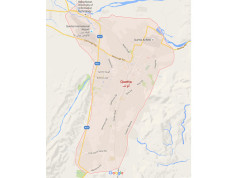Click here to read the first part of this article
Dervaish Ali
While there were many places where we used to race the bikes, the best place was this straight stretch of road, about 3kms long, in Spizand on the Bolan national highway that went through Mach and Sibi to Sindh and connected to the highways in the Punjab province. Mostly used by goods transporting heavy duty trucks that usually came along in pairs every thirty minutes or so, it was a cruel stretch of asphalt, flanked on both sides by a wide expanse of barren land called the “dasht” (desert). The icy winter winds that blew in this dasht cut through the bones. This patch of land that is swept by Siberian winds every winter was once host to the migratory houbara bustard that made its grueling journey to it from that extremely cold northern province of Russia. Yes, the same near-extinct bird called “talour’ in the vernacular tongues and which the royals of the Middle East so lovingly hunt in Balochistan despite the numerous warnings by many credible international environmental and conservation organizations. These unsustainable hunting expeditions have continued to this day, mainly because the ruling elites of this country, including those who now preach the mantra of “naya Pakistan”, keep receiving compensatory hush money from these obscenely rich and spoiled Arabs, often in the form of “unconditional” financial packages.

Back to our story. It was the Kawasakis that reigned over these races on this runway-like track. Two models were particularly fast: the swift 110cc road-bike GTO and the high saddled off-roader KE-175. The latter model, especially when tuned and raced by Haji Ustad, was unbeatable. These races were essentially the battles of the Kawasakis of different models tuned differentially by the expert mechanics, meaning different oxygen-gasoline ratios for optimum combustion and performance. The nearest rival of these quick Kawasakis was a beautifully styled Yamaha road racer with a buzzing sound, then newly introduced and called the RX-115.
There’s an interesting little story about what happened on one such racing day. On a freezing February morning the racers, their friends and sidekicks crowded the starting spot on that desolate track in Spizand. It was a sunny day but the wind was brutal, as usual. The bikers were on their Kawasakis, their Yamahas (the RX-115s) and a couple of Hondas were there, too–those perennial CG-125s. Haji Ustad and Deedar Ustad were present but Munir Ustad did not show up on that day. The Kawasakis raced the other Kawasaksis and also the other bikes. For more than three hours the bikes were raced and tested with different riders. Then, towards the end of the day, something really interesting happened.
A young guy named Zulfi was accompanying his friend, a proud Kawasaki KE-175 owner, on that day. This Zulfi, who was a resident of Nawabshah, Sindh and was visiting his grandparents in Quetta, had an old machine, a Suzuki GP-100, with a loose rear mudguard and a broken right side front indicator. The bike was a piece of junk, and it made a painfully shrill sound, like that from an embarrassingly cheap electric guitar played by some punk pretending to be a guitar ace for some heavy metal band! So, came along this young man Zulfi with his re-incarnated Suzuki—the engine had been recently overhauled by the one and only Deedar Ustad—-and parked next to a screaming GTO at the starting line. There were six or seven bikes at the start line, all throttling and ready for the final race of the day. The slightly chubby Zulfi on his lowly red contraption—the only “untouchable” in the line-up of high caste machines—looked cool, chewing calmly on his shocking-pink sugary Mayfair bubble gum. The flag came down and off they went leaving behind a cacophony of putt-putt, vroom-vroom, and boom-boom sounds and quickly disappearing into a pungent cloud of bluish white smoke.
It was usually a two way race. They had to race the 3km stretch and then return to the starting line to complete the race. After a few minutes of silence during which the chilly wind screamed into our almost frozen but attentive ears, we began to hear the faint buzz of the returning bikes. Then the small dots started taking form, with a red thing leading the pack. At first, the glare of nickel and steel reflecting off the polished wheel rims, spokes and other parts of the bikes made it difficult for us to identify the leader. But within the next few seconds, it was clearly Zulfi’s Suzuki that was way ahead of a second place Kawasaki KE-175, also red in color. That rickety jumble of scrap metal, rubber and plastic, the GP-100, had beaten the mighty Kawasakis! Among the bikers, it became the talk of the town for many months and years after that day. Zulfi disappeared soon afterward and so did the old Suzuki.
Although now I don’t own one, I still love motorcycles, especially the furiously fast Kawasaki Ninjas. But every time I see a Suzuki on the road, I feel a cold shiver run up and down my spine. And as I recall that fateful February day in Spizand, a spontaneous smile appears on my face. My wife and kids look at me, I point to the Suzuki on the road, and they also smile with me. (Concluded)
Note by Author: I heard from a friend that Deedar Ustaad passed away some days ago. He was killed in an accident. Apparently he was fixing some lamp or something and the current killed him!
Disclaimer: Views expressed in this article are those of the author and Balochistan Voices not necessarily agrees with them.
Share your comments!









